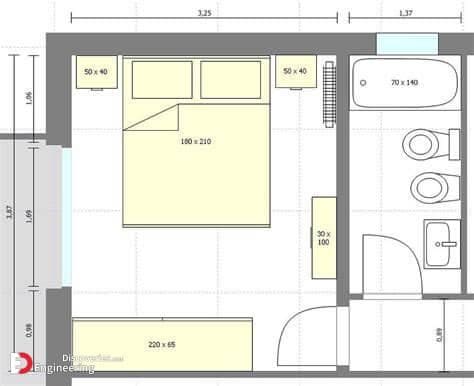Bauhaus Architecture: A groundbreaking blend of art, craft, and industry; that’s all we have read and known about Bauhaus architecture. The 20th-century Bauhaus architects had an agenda to leave behind the traditional visions and incorporate new elements that had global influence. This evolution can be traced back to a school of architecture: The Bauhaus school, led by Walter Gropius(1883-1969)
The revolution time was very transformative and included functional shapes, modern art, and minimal decor that looked very different and gracious. The essence of the designer’s craftsmanship reflects boldness and is culturally endearing.
The Bauhaus School of Art was previously known as “Staatliches Bauhaus” as it was a state-funded institution & a combination of two schools, the Grand Ducal Saxon Academy of Fine Art and the Grand Ducal Saxon School of Arts and Crafts
As exciting as the above information sounds to us, the in-depth information and exploration of the Bauhaus marvels are equally enticing. There is more to the information that will showcase the forward-thinking vision of Bauhaus. So let’s learn more about it.
What is Bauhaus Architecture? Prominent Years: 1919-1933
Bauhaus Architecture is a school of design and architecture founded in Weimar, Germany, in 1919, by renowned architect Walter Gropius. By synergizing arts, crafts, design, architecture, and technology into the design, Walter Gropius gave birth to a novel approach. This approach was focused on social and communal interest, as well as the development of functional architecture.
Gropius believed that the objects in design should be aesthetic, useful, and accessible to everyone. His exciting journey towards the Bauhaus revolution began on March 10, 1919, when he applied to establish an academy in Weimer. Gropius was just 35 years old when he received the permit to open “National Bauhaus in Weimar”, merely a month later on 12th April. And within this span of one month, Walter manifested the vision for dramatic changes he would wish to bring into the world and revolutionize it completely. The establishment of the Bauhaus marked the beginning of a new era where the boundaries between art, functionality, design, and utility were blurred.
The History Behind the Revolution
Walter Gropius was determined to use functional items in everyday life instead of singular pieces of art in the Bauhaus movement. The idea challenged the traditional use of ornamentation and exclusive design pieces.
The revolution initiated by Gropius attracted some key features of modernization. From using handmade crafts, the school soon shifted its focus to use industrial, and merging art and technology that can help in mass production.
The architectural characteristics include functional shapes, abstract shapes, simple color schemes, holistic design, and basic industrial materials like concrete, steel, and glass.
With this mindset, Bauhaus made an impact and produced a diverse array of items ranging from furniture and household objects to buildings.
The Origin of Bauhaus Architecture
The visionary Bauhaus school was formed soon after the end of World War I in 1919. Gropius thought of focusing on art comprehensively in a unified form. He desired to follow the German concept of Gesamtkunstwerk, meaning “ the work of art” that combines all the art forms into one.
However, in 1925, the school was forced to close its doors and later moved to Dessau for political reasons. The roots of the revolution were firmly laid in Weimar, however, what we see today as a Bauhaus influence, originated in Dessau.
Walter Gropius was in no hurry to make a name for himself, instead, he was very much devoted to the process of artistic exploration. His commitment and ethos were later transferred to his students who took over the revolution.
Some of the well-known representatives of Bauhaus are:
Oskar Schlemmer;
László Moholy-Nagy;
Lyonel Feininger;
Wassily Kandinsky;
Paul Klee;
All of these artists adhered to the ideology “Form follows function” and crafted architectures that continue to captivate the eyes even today.
Unfortunately, the vibrant school moved from Dessau to Berlin and subsequently closed permanently in 1933 by the Nazis. Nazis called this modernized idea “unGerman” and suppressed the forward-thinking vision.
(Nevertheless, both the Bauhaus institutions in Weimar as well as Dessau are listed on the UNESCO World Heritage List. This highlights the enduring impact of Bauhaus and its cultural significance. )
On the positive side, this act of closure didn’t stop Gropius and other prominent architects from progressing. They chose not to relent, instead, they left Germany and began the revolution in Western Europe, the US, Canada, and Israel, resulting in an international movement.
Some Popular Names of The Bauhaus Architects
Despite its brief and turbulent duration, the period of revolution successfully produced some very well-known and influential artists. A few names to remember include:
Walter Gropius;
Marcel Breuer;
Paul Klee;
Anni Albers;
All of these artists followed the ideology “Form follows functions” and created architectures that are captivating the audience even today. The design catches attention with symmetrical shapes, unusual materials, and complementary color schemes.
Designers combine craftsmanship, art, and technology to create objects in Bauhaus, meaning they design the objects to prioritize functionality over aesthetics.
What Are the Characteristics of Bauhaus?
It might come as a surprise but all Bauhaus buildings look different. But also have common identifiable characteristics. Let us learn more about nuances and characteristics that will help us identify Bauhaus architecture:
Functional Shapes:
Bauhaus ideology believed in designing shapes over ornamentation or embellishments. Designers implement the philosophy in every step of designing, from architectural buildings to furnishings. You will find Bauhaus buildings having flat roofs or tubular chairs that have the angular length of steel tubing. You will also find the use of abstract shapes spread here and there in decoration, especially for mass production. This reflects the Bauhaus movement’s commitment to functional simplicity.
Simple Color Schemes:
Walter Grompois’s idea was to keep things simple and this can be seen in the way buildings were colored using basic colors like white, beige, and gray. The use of neutral tones highlights clean lines and functional simplicity. However, modern influence in Bauhaus design often uses red, yellow, or blue on a single wall deliberately. The change in color scheme reflects the willingness to experiment with the traditional Bauhaus design.
Industrial Materials:
Bauhaus design focuses on including industrial materials such as glass in ribbon windows or glass curtain walls. It also uses concrete in building design and steel in appliances and objects like lamps and chairs. The simplicity and the inclination towards industrialism can be seen in the way these materials are meticulously incorporated.
Balanced Asymmetry:
Bauhaus architects aimed to balance asymmetry and symmetry by designing buildings and rooms that have the same elements throughout. However, designers created distinct designs for both sides of the rooms, making them look different from each other. This challenged traditional design conventions. The idea was to infuse a sense of balance into the design by balancing symmetry.
Bauhaus embraced this beauty and allowed experimenting with a more dynamic way of building designs.
Holistic Design:
You wouldn’t find Bauhaus designing approaches different for different architectures. Instead, they followed a holistic and consistent approach to everything, including street corners, architecture, furniture design, appliances, typography, utensils, etc.
The uniformity is something that defines the Bauhaus legacy.
Interesting Facts About Bauhaus Architecture Style:
Tel Aviv’s “White City” in Israel has earned a listing as one of the UNESCO World Cultural Heritage sites.
Steve Jobs also admires the influence of Bauhaus simplicity over designing Apple products.
Dr. Caligari showcases the great influence of Bauhaus in films.
Bauhaus is more than just an architectural style! It is a comprehensive design movement that allows seamless integration of art vision into everyday life.
FAQs:
Bauhaus design is still popular today as it encourages mass production while not restricting it.
Bauhaus aimed to create functional objects using craftsmanship. In this journey, they abandoned many aspects of traditional fine arts education which contradicted many traditional architects. The radical approach became a matter of controversy in those times.
Explore Further
Top 8 Architecture Trends to Expect
Evolution of Gothic Architecture: Characteristics, History and More
The post Bauhaus Architecture: Characteristics, History appeared first on Architectures Ideas.



